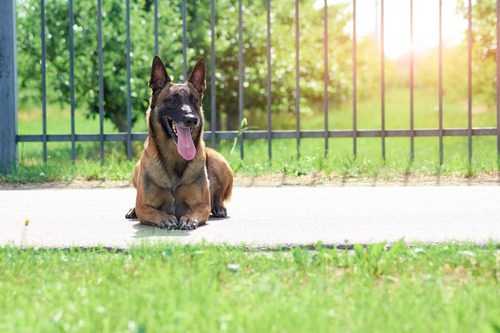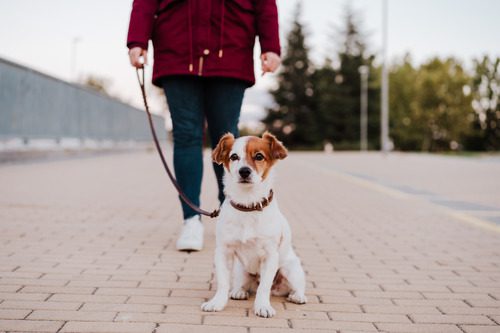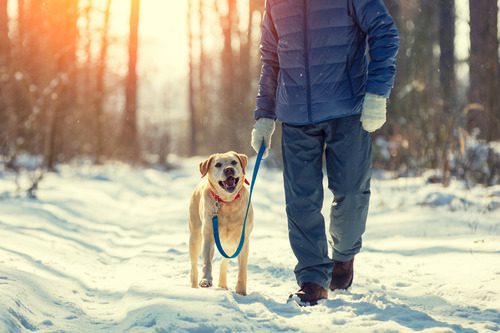My Dog Keeps Panting – Is This Normal?
Panting is a natural behavior for dogs, but when it happens more frequently than usual, it can leave you wondering what’s going on. Whether your dog is catching their breath after playtime or panting in situations that seem out of the ordinary, it’s easy to feel concerned. While panting often helps dogs regulate their temperature, it can also signal other things going on beneath the surface. As a dog owner, it can be helpful to know the difference between normal vs. abnormal panting in dogs and give you peace of mind to know how to handle any unusual occurrences.

What Causes Panting in Dogs?
Panting serves several purposes for your dog, and in most cases, it’s completely natural. Unlike humans, dogs don’t sweat through their skin. Instead, they regulate their body temperature by panting, which allows moisture to evaporate from their tongue and mouth, cooling them down. However, not all panting is about cooling off.
Heat and Exercise
If your dog has been running, playing, or simply outside on a warm day, panting is a natural way for them to cool down. However, monitor how much they’re panting and if they recover quickly once they’ve rested or come indoors. Prolonged panting, especially in hot weather, can be a sign of heat exhaustion or heatstroke, which requires immediate veterinary care.
Stress and Anxiety
Dogs are sensitive animals, and their panting can often reflect how they’re feeling emotionally. When a dog is stressed or anxious, panting becomes a way to self-soothe. If your dog pants during thunderstorms, car rides, or visits to the vet, they may be responding to stress. While occasional panting due to anxiety isn’t usually a concern, chronic stress can impact their overall health.
Normal Panting vs. Excessive Panting
Distinguishing between normal panting and excessive panting can be tricky. If your dog pants lightly after exercise or when excited, it’s likely normal. But if they’re panting heavily at rest, or the panting lasts longer than usual, it could be a sign of something else.
Medical Conditions Associated with Dog Panting
Excessive or abnormal panting may be a symptom of a medical condition. Some common health issues associated with panting include respiratory problems, heart disease, and pain.
Respiratory Issues
Panting can sometimes indicate that your dog is having trouble breathing. Conditions like bronchitis, pneumonia, or even a foreign object lodged in the airway can cause heavy panting as your dog tries to get more oxygen. If your dog’s panting is accompanied by coughing, wheezing, or labored breathing, it’s important to seek veterinary care as soon as possible.
Heart Disease
Heart problems make it difficult for a dog’s body to circulate oxygen effectively, causing them to pant more in an attempt to get the oxygen they need. If your dog’s panting is combined with lethargy, fainting, or a swollen belly, these could be signs of heart disease.
Pain or Discomfort
Dogs may pant when they are in pain. This could be due to an injury, arthritis, or another medical condition causing discomfort. If your dog is panting excessively and seems restless, whines, or is reluctant to move, it could be a sign they are in pain. In these cases, a veterinary evaluation is necessary to identify and address the cause of their discomfort.
How Your Vet Can Help Determine the Cause of Panting
If you’re concerned about your dog’s panting, visiting your veterinarian at The Village Vets – Plymouth Meeting is the best way to get answers. A thorough examination can help identify whether the panting is due to a medical issue or if it’s part of your dog’s natural response to their environment. During the exam, your vet may ask about your dog’s recent activity, any changes in their behavior, or other symptoms they may be experiencing.
Diagnostic Testing
Depending on the findings, your vet might recommend diagnostic tests, such as bloodwork, X-rays, or an ultrasound, to get a closer look at what’s going on. In some cases, treatment may involve managing a medical condition, while in others, it might be as simple as adjusting your dog’s environment or routine.
When Should You Be Concerned About Panting?
It’s normal to wonder if your dog’s panting is something to worry about. While many cases of panting are harmless, if your dog is panting heavily for no apparent reason, appears in distress, or has other symptoms like vomiting, diarrhea, or a lack of appetite, you should seek veterinary care promptly. Similarly, if your dog’s panting is accompanied by pale or blue gums, difficulty breathing, or fainting episodes, these could be signs of a serious health condition that requires immediate attention.
Helping Your Dog Stay Comfortable
While panting is a natural and necessary behavior for dogs, there are steps you can take to ensure your dog remains comfortable, especially during times of increased panting.
- Make sure they have access to fresh water at all times, particularly in hot weather or after exercise.
- Provide a cool, shaded area for them to rest in, and avoid vigorous activity during the hottest parts of the day.
- If your dog pants due to stress, you may want to consider creating a calming environment for them, such as a quiet room with their favorite toys, or using soothing aids like dog-safe calming sprays or music.
If you’re unsure whether your dog’s panting is normal or cause for concern, trust your instincts and seek professional veterinary guidance. At The Village Vets – Plymouth Meeting, we’re here to assess your pet’s health and provide the appropriate treatment. Call us at (484) 820-1700 or schedule an appointment online if you have any questions about your dog’s panting or overall health. Our team can ensure your pet receives the care and attention they deserve.
Recent Posts
About The Village Vets
The Village Vets of Plymouth Meeting offers excellent service to clients in a comfortable, friendly atmosphere. To learn more about us and how we can better serve you and your pet here in Plymouth Meeting, PA, click the button below.
Share This Post
Recent Posts
About The Village Vets
The Village Vets is a network of three animal hospitals based in Atlanta, GA and the surrounding area. We offer honest, excellent service to our clients in a comfortable, friendly atmosphere. To learn more about our locations and how we can better serve you and your pet, click the button below.




